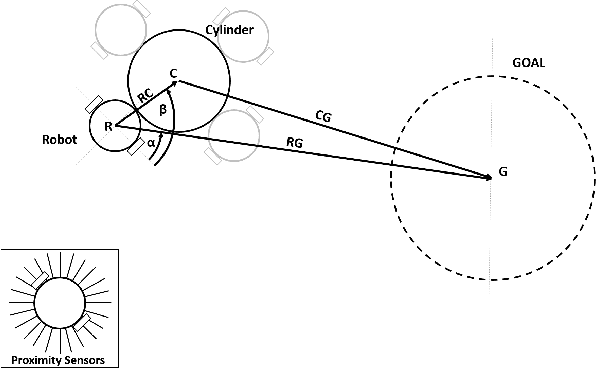Joshua Bloom
Decentralized Multi-Agent Reinforcement Learning with Global State Prediction
Jun 22, 2023Abstract:Deep reinforcement learning (DRL) has seen remarkable success in the control of single robots. However, applying DRL to robot swarms presents significant challenges. A critical challenge is non-stationarity, which occurs when two or more robots update individual or shared policies concurrently, thereby engaging in an interdependent training process with no guarantees of convergence. Circumventing non-stationarity typically involves training the robots with global information about other agents' states and/or actions. In contrast, in this paper we explore how to remove the need for global information. We pose our problem as a Partially Observable Markov Decision Process, due to the absence of global knowledge on other agents. Using collective transport as a testbed scenario, we study two approaches to multi-agent training. In the first, the robots exchange no messages, and are trained to rely on implicit communication through push-and-pull on the object to transport. In the second approach, we introduce Global State Prediction (GSP), a network trained to forma a belief over the swarm as a whole and predict its future states. We provide a comprehensive study over four well-known deep reinforcement learning algorithms in environments with obstacles, measuring performance as the successful transport of the object to the goal within a desired time-frame. Through an ablation study, we show that including GSP boosts performance and increases robustness when compared with methods that use global knowledge.
A Study of Reinforcement Learning Algorithms for Aggregates of Minimalistic Robots
Mar 28, 2022



Abstract:The aim of this paper is to study how to apply deep reinforcement learning for the control of aggregates of minimalistic robots. We define aggregates as groups of robots with a physical connection that compels them to form a specified shape. In our case, the robots are pre-attached to an object that must be collectively transported to a known location. Minimalism, in our setting, stems from the barebone capabilities we assume: The robots can sense the target location and the immediate obstacles, but lack the means to communicate explicitly through, e.g., message-passing. In our setting, communication is implicit, i.e., mediated by aggregated push-and-pull on the object exerted by each robot. We analyze the ability to reach coordinated behavior of four well-known algorithms for deep reinforcement learning (DQN, DDQN, DDPG, and TD3). Our experiments include robot failures and different types of environmental obstacles. We compare the performance of the best control strategies found, highlighting strengths and weaknesses of each of the considered training algorithms.
 Add to Chrome
Add to Chrome Add to Firefox
Add to Firefox Add to Edge
Add to Edge